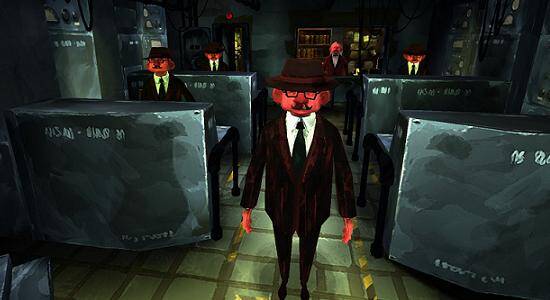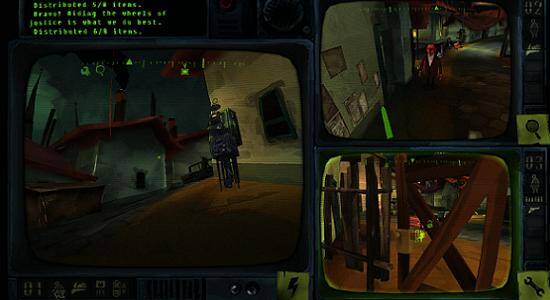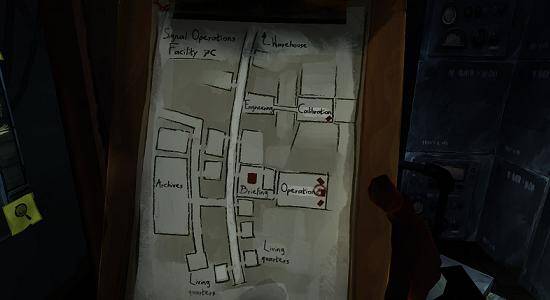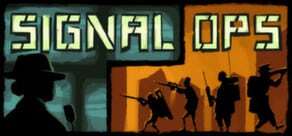Developer Summary
Are you ready to be put to the test? If deemed worthy, you will be assigned as an officer in the shadowy halls of Facility 7C. You will remotely lead a squad of operatives on daring espionage missions to plant evidence, steal secrets, assassinate targets, and perform sabotage for the glory of the Dark Father. Do you have enough faith to follow orders unquestioningly?
Signal Ops: What We Think
Signal Ops offers a unique experience through a combination of strategy, stealth, puzzle and first-person shooter gameplay mechanics. All of this is wrapped up in an alternative 1950s style world filled with spies wearing bowler hats. The player is positioned as an officer in charge of a team of agents, each with unique abilities that must be combined to achieve objectives.
At first glance the gameplay of Signal Ops may remind many players of the early Rainbow Six games where you could issue orders to multiple squad mates and plan a surgical assault in detail. A little more time with this game, however, reveals that its goals are more diverse and that the gameplay is less focused on tactical action.
Spying on Spies
The gameplay of Signal Ops takes place in a secret base where you can interact with other characters, prepare your squad and undertake missions. Whenever you begin a mission you need to walk up to a set of monitors that will allow you to watch over and control your squad. Each squad member gets their own monitor (although you can change which member is positioned on which monitor at will) and you switch between active monitors to control each agent separately.

A comprehensive, if rather drawn out tutorial will guide you through the basics of Signal Ops. There is a lot to learn about how to control multiple agents and how to master each of their abilities, but the tutorial does a thorough job of going over the key issues. Instructions are split between a set of audio guidelines and more specific help in text form.
Once the tutorial is out of the way (it concludes with a short mission involving the capture of a briefcase) you can get started on your first real mission. An often humorous briefing precedes each mission and you can outfit each of your available agents with the tools and weaponry you feel is most apt for the job. The options available are fairly limited but who you bring to each mission is generally more important than what they carry.
The Clipboard is Mightier Than The Sword
All of your available information is kept on a clipboard that your character carries around with him. The board features a map of the main base, mission maps, objectives, memos and squad details. The clip board is one of the most effective tools that the game uses to remind you that you aren’t actually in the field. Whenever you pull up the map during a mission your character simply lifts up the clipboard into eyeline. The contrast between the tension of the field operations and the relative safety of your character is something Signal Ops pulls off very well.

Missions involve completing a list of objectives within a sandbox area like a small town. Staying on top of the unique abilities of each squad member is key to success; for example, the Wrench is the only squad member that can pick locks and enable you to move forward into secured areas. The Scope, meanwhile, is an assassin with both long range and short range killing techniques. Perhaps the most useful agent is the Spy who can safely scout without drawing any attention.
Bolted Down
The most important agent is undoubtedly the Bolt – the operative who carries the radio. In order to have a live video signal from your squad they need to be within the radius of a powered radio and if any agent strays beyond this radius their feed will go dead. In order to progress through an area, you need to use the Bolt to move the radio forward and shift this island of signal around with your team.
Unfortunately this particular mechanic scuppers the pace of the game. In order to move to an area containing an objective you first need to safely scout it with a spy, then move your radio operative there (to a power point) and then move up your other team members to actually complete the objective. This routine must be repeated again and again as you move around a level and it soon becomes tedious. There is an easy mode that removes the radio entirely, but a central facet of gameplay really shouldn’t be this wearisome.

Aesthetically, Signal Ops is deliberately equal parts dreary and surreal. This creates an unusual atmosphere that supports the quirky storyline. The oppressive environments and story are often juxtaposed with amusing dialogue and this works well to create a world that is both interesting and comfortable to explore.
Faded Signal
Signal Ops is a fascinating game with admirable goals. The combination of a first-person perspective and simultaneous character control makes for an unusual experience that opens up interesting possibilities. Co-operative play is available both online and locally, allowing for potentially enjoyable multiplayer coordination.
Unfortunately the game is hampered by some poor gameplay mechanics that require too much repetition and foster tedium in what is otherwise an intriguing title. There is strong potential for strategic fun here, but only if you are willing to ignore the pacing issues created by the radio signal system.
Get Signal Ops on Steam
Get Signal Ops on GOG
[xrr rating=”3/5″]
Watch the Signal Ops release trailer:





